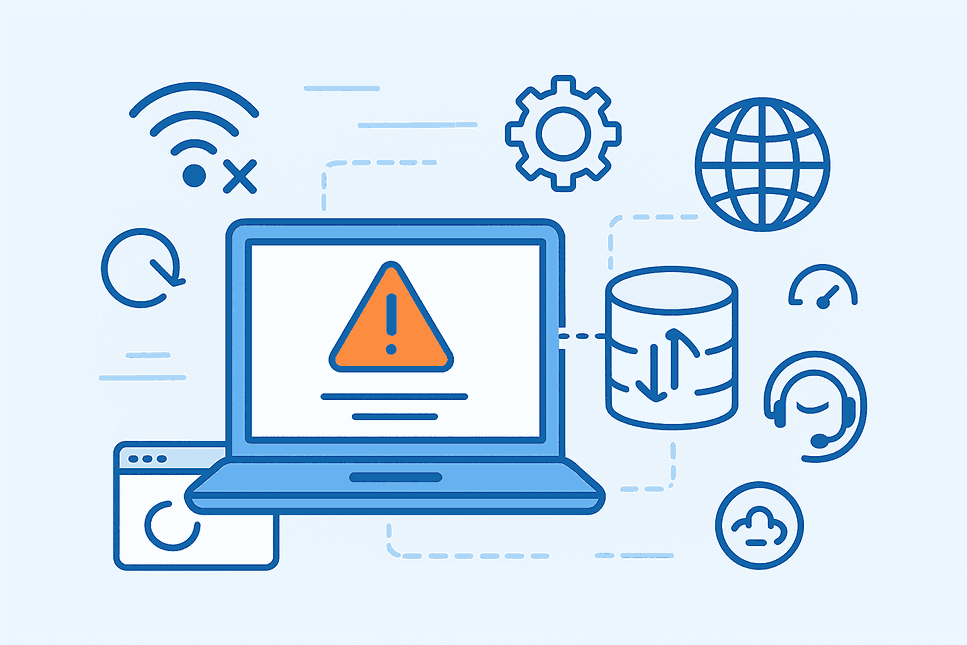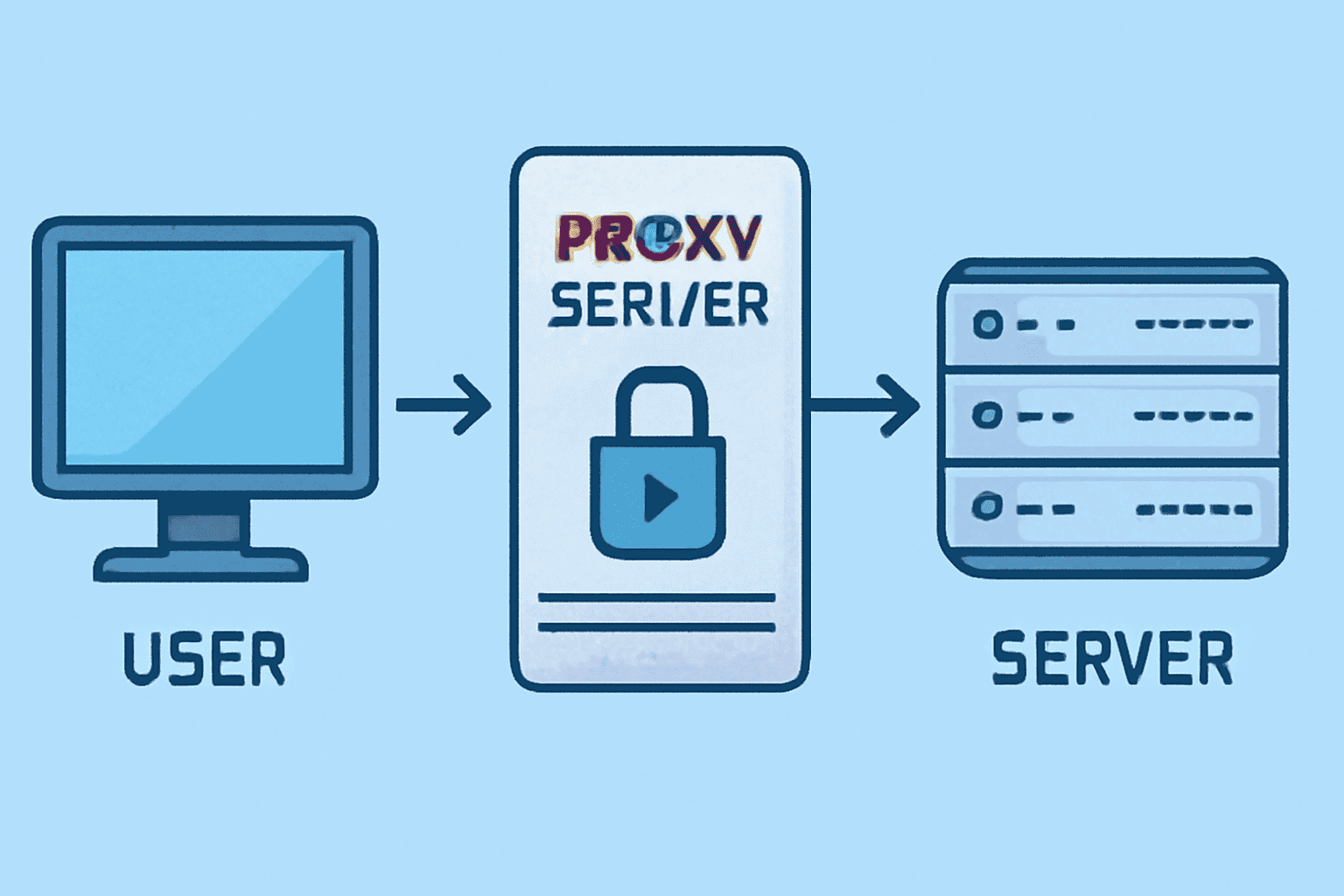If you use a proxy to surf the web more privately or to get content from other parts of the world, you've definitely had some annoying connection issues. Don't worry, you're not the only one! Proxy connection problems happen a lot, but most of them can be fixed with easy fixes that don't need any technical know-how.
What is a proxy, and why do connection problems happen?
A proxy server is a computer that connects your device to the internet. When you utilize a proxy, your internet traffic flows through this server before it gets to where it's going. It's like having a friend send you messages. Sometimes they come through properly, and other times they don't.
When you use a proxy, it adds an extra step to your internet browsing, which can cause problems with your connection.
Most Common Proxy Connection Problems
1. "Unable to Connect" or "Connection Timeout" Errors
This is probably the most frustrating issue you'll encounter. Your browser simply won't load websites, or it takes forever to load them.
Why it happens:
- The proxy server is down or overloaded
- Your internet connection is unstable
- The proxy settings are configured incorrectly
2. Slow Browsing Speed
Pages load extremely slowly, videos buffer constantly, and downloads crawl at a snail's pace.
Why it happens:
- The proxy server is located far from your location
- Too many people are using the same proxy
- The proxy service has bandwidth limitations
3. Websites Not Loading Properly
Some websites display incorrectly, images don't load, or certain features don't work.
Why it happens:
- The proxy is blocking certain types of content
- Website security features conflict with proxy settings
- The proxy is not compatible with modern web technologies
4. Frequent Disconnections
Your proxy connection keeps dropping, forcing you to reconnect repeatedly.
Why it happens:
- Unstable proxy server
- Your device's power-saving settings
- Network interference
Step-by-Step Troubleshooting Solutions
Solution 1: Check Your Basic Settings
For Windows Users:
- Open your Settings (Windows key + I)
- Go to Network & Internet
- Click on Proxy in the left menu
- Make sure the proxy address and port are correct
- Try turning the proxy off and on again
For Mac Users:
- Open System Preferences
- Click on Network
- Select your connection and click Advanced
- Go to the Proxies tab
- Verify your settings are correct
For Mobile Devices:
- Go to your Wi-Fi settings
- Find your connected network and tap the "i" icon
- Scroll down to HTTP Proxy
- Check if the settings match what your proxy provider gave you
Solution 2: Try a Different Server Location
Most proxy services offer multiple server locations. If you're having trouble with one server:
- Switch to a closer location – Choose a server in your country or nearby
- Try a less crowded server – Avoid popular locations like major cities during peak hours
- Test different regions – Sometimes specific server locations have temporary issues
Solution 3: Restart Everything
This simple solution fixes many connection problems:
- Close your browser completely
- Restart your router – Unplug it for 30 seconds, then plug it back in
- Restart your device
- Try connecting again
Solution 4: Check for Interfering Software
Some programs can interfere with proxy connections:
- Temporarily disable your antivirus – Don't forget to turn it back on!
- Close VPN software – You usually can't use both a VPN and proxy simultaneously
- Exit other proxy software – Make sure you're not running multiple proxy applications
- Disable browser extensions – Some ad blockers or security extensions conflict with proxies
Solution 5: Test Your Internet Connection
Before blaming the proxy, make sure your basic internet works:
- Turn off the proxy temporarily
- Visit a few websites to confirm your internet works normally
- Run a speed test to check your connection quality
- If your internet is slow or unstable, contact your internet provider first
Solution 6: Try Different Browsers
Sometimes the issue is browser-specific:
- Test with Chrome, Firefox, Safari, and Edge
- Try incognito/private browsing mode
- Clear your browser's cache and cookies
- Reset your browser settings to default
Solution 7: Contact Your Proxy Provider
If nothing else works:
- Check your provider's status page – They often post about server issues
- Contact customer support – Provide specific error messages you're seeing
- Ask about server recommendations – They can suggest the best servers for your location
- Verify your account is active – Sometimes payment issues cause disconnections
Prevention Tips: Avoid Future Connection Issues
Choose Reliable Proxy Services
Look for providers that offer:
- Multiple server locations
- 24/7 customer support
- Money-back guarantees
- Positive user reviews
- Clear setup instructions
Keep Your Software Updated
- Update your browser regularly
- Install operating system updates
- Keep your proxy software current
Monitor Your Connection
- Test your proxy weekly to catch issues early
- Keep backup server information handy
- Document what works so you can repeat successful configurations
Use Proper Network Settings
- Connect to stable Wi-Fi when possible
- Avoid public Wi-Fi for proxy setup
- Position your device close to your router for better signal strength
When to Consider Alternative Solutions
Sometimes, persistent proxy problems indicate it's time to try something different:
Consider switching if you experience:
- Constant disconnections despite troubleshooting
- Consistently slow speeds across all servers
- Poor customer support response
- Frequent service outages
Alternative options include:
- Different proxy providers with better infrastructure
- VPN services that might be more reliable for your needs
- Built-in browser privacy features for basic protection
Quick Reference: Emergency Fixes
When you need a fast solution:
- Change server location immediately
- Restart your browser
- Switch to mobile data if using Wi-Fi (or vice versa)
- Try a different device to isolate the problem
- Disable the proxy temporarily to verify your internet works
Final Thoughts
Proxy connection issues can be frustrating, but they're usually fixable with patience and systematic troubleshooting. Start with the simplest solutions first – you'd be surprised how often restarting your browser or switching server locations solves the problem.
Remember that not all proxy services are created equal. If you're constantly battling connection issues, it might be worth investing in a higher-quality service. Good proxy providers offer reliable connections, multiple server options, and responsive customer support to help when things go wrong.
The key is to stay calm, work through the solutions methodically, and don't hesitate to reach out for help when needed. With these troubleshooting steps in your toolkit, you'll be able to resolve most proxy connection issues quickly and get back to secure, private browsing.
Most importantly, always ensure you're using proxy services for legitimate purposes and in compliance with your local laws and the terms of service of the websites you visit.


